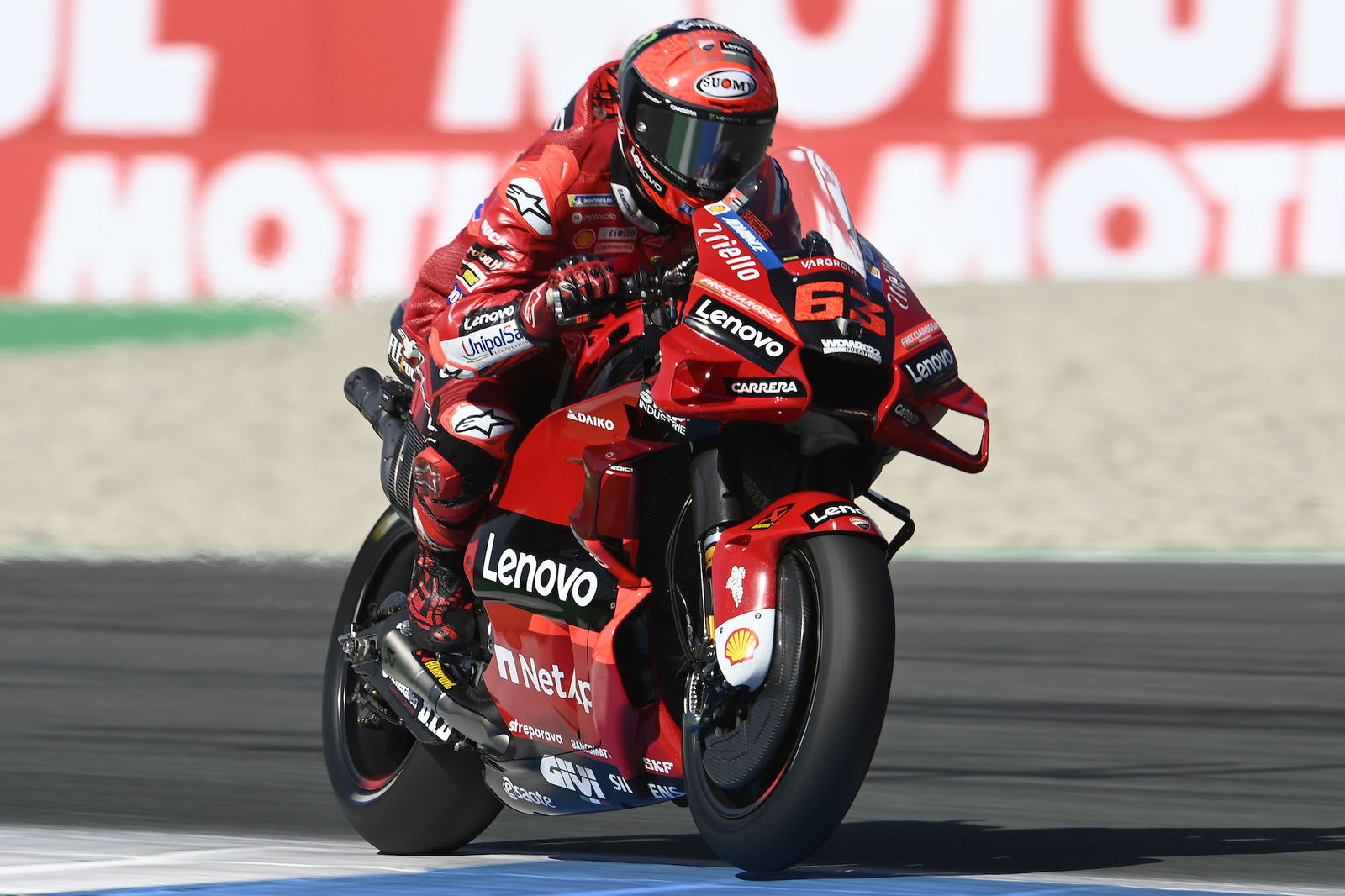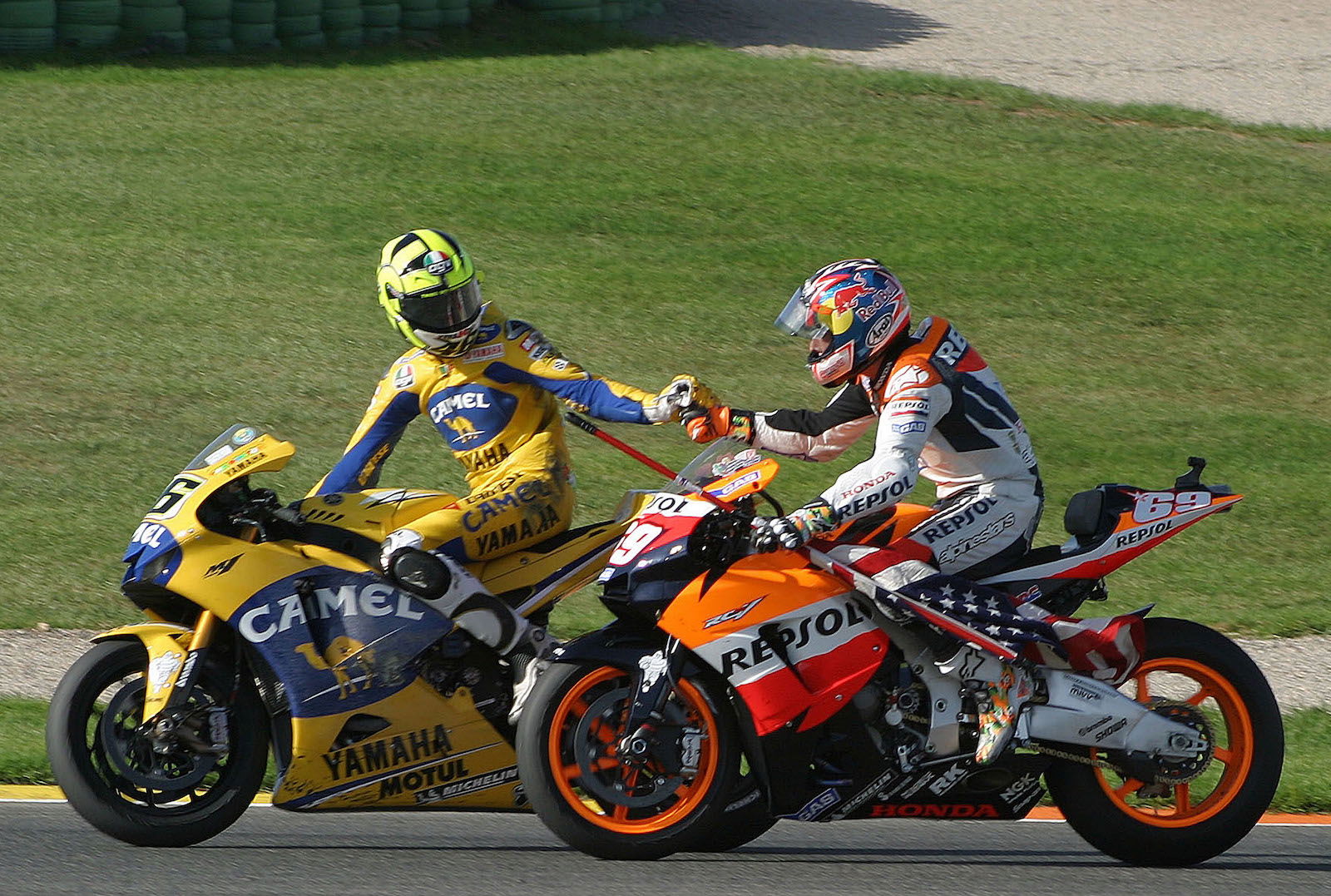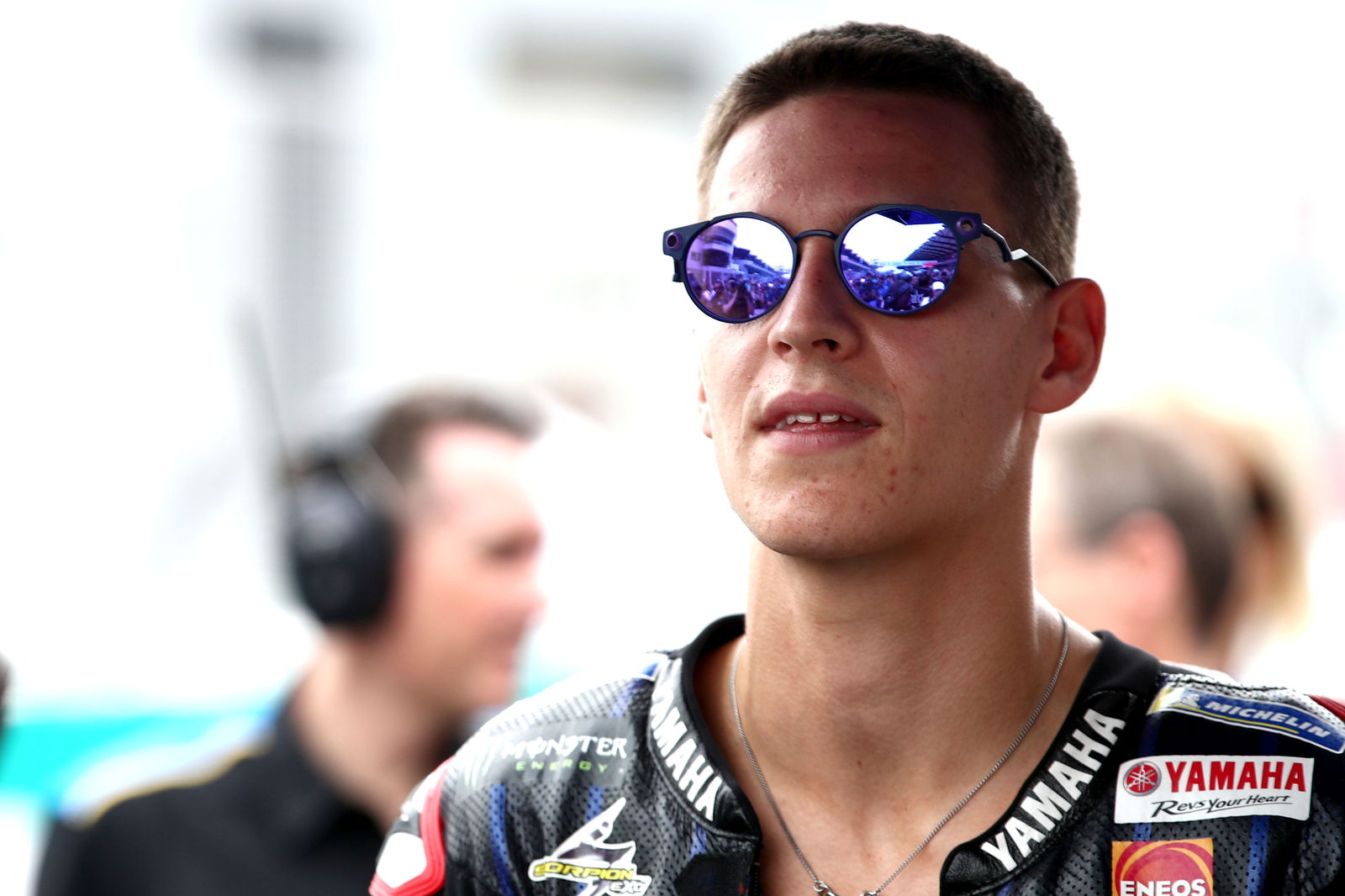Are digital LED sponsorship panels coming to MotoGP?
Seamless Digital has already placed its digital sponsorship panels on Formula One cars, and perhaps MotoGP, or motorcycle racing in general, will be next.

LED advertising panels could be on their way to MotoGP in the future, following the release of patent drawings.
The company Seamless Digital is reportedly developing LED advertising screens for use in motorcycle racing, particularly MotoGP.
The technical development was uncovered by Cycle World, who published patent drawings from Seamless Digital showing the application of their LED screens to a MotoGP bike, as well as the leathers of the rider.
The screens have been used before, specifically by McLaren on their MCL36 Formula One car in practice at the 2022 US Grand Prix in Texas, allowing the display to switch between sponsors. Whether McLaren will continue with the LED panels in 2023, or whether they will be seen on the cars of other F1 teams, is not yet confirmed.
Of course, applying to cars is more simple than to bikes, since, in a similar way to aerodynamics, the stable surface of a car makes it easier to work with than the dynamic surface of a motorcycle, and much more than that the rider themselves.
Theoretically, the screens would offer a way for sponsorship placements to be dynamic, and open greater sponsorship opportunities to racing teams.
However, making the screens light enough and, in the case of those applied to the racing suits, safe enough are of course both significant hurdles.

Part of the weight issue comes down to the individual batteries used for each screen, since they are not plugged into the vehicle’s electronics systems.
On the side of the leathers, the screens would have to be flexible enough to avoid restricting rider movements, and their implementation would of course need to be proven to avoid compromising the suit’s safety and structure, which Cycle World reports would be addressed by placing the screens beneath plastic covers sewed into the leathers.
It also remains to be seen whether sponsors would see the value in a space on either the bike or the leathers that was dynamic and therefore not guaranteed.

Part of the reason Lenovo has their name on the side of the factory Ducati MotoGP bike, for example, is so that when Francesco Bagnaia was celebrating his world title victory in Valencia the Chinese electronics company was guaranteed to have its logo fairly largely displayed across both Bagnaia’s bike and the rider himself.
The screens would theoretically allow for more sponsorship, but potentially less-valuable sponsorship since there would be no guarantee that the space which has been paid for by the sponsor will be displaying their name or logo when the cameras are showing that space.

Further, there is marketable value in having your company’s name as a sponsor displayed during iconic sporting moments. Think, for example, about the advertising benefits for Red Bull and Repsol of the emotional celebrations of Nicky Hayden at Valencia in 2006, and how dynamic sponsorship might reduce that.
On the other hand, perhaps marketers will not see it that way, and will instead see a way for their smaller budget to get a larger share of the advertising surface which is a racing motorcycle’s fairing. There is a possibility that this could increase the number of sponsors involved in the sport overall, which might increase the money for the teams even if each individual sponsorship is less valuable.

